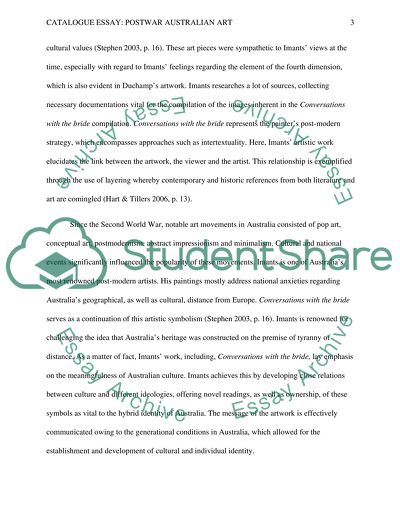Cite this document
(“Catalogue essay: Postwar Australian Art Essay Example | Topics and Well Written Essays - 1000 words”, n.d.)
Retrieved from https://studentshare.org/visual-arts-film-studies/1485918-catalogue-essay-postwar-australian-art
Retrieved from https://studentshare.org/visual-arts-film-studies/1485918-catalogue-essay-postwar-australian-art
(Catalogue Essay: Postwar Australian Art Essay Example | Topics and Well Written Essays - 1000 Words)
https://studentshare.org/visual-arts-film-studies/1485918-catalogue-essay-postwar-australian-art.
https://studentshare.org/visual-arts-film-studies/1485918-catalogue-essay-postwar-australian-art.
“Catalogue Essay: Postwar Australian Art Essay Example | Topics and Well Written Essays - 1000 Words”, n.d. https://studentshare.org/visual-arts-film-studies/1485918-catalogue-essay-postwar-australian-art.


